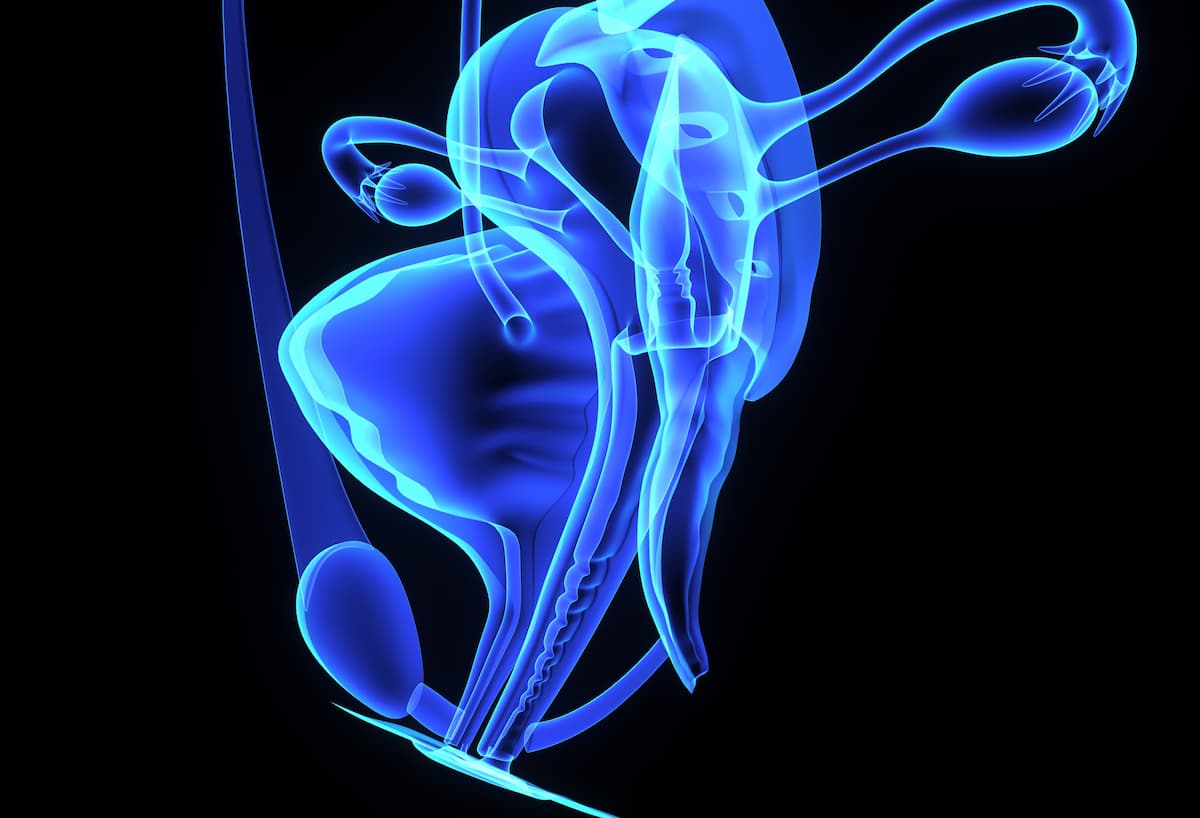Simple Hysterectomy Noninferior Vs Radical Hysterectomy in Cervical Cancer
Treatment with simple hysterectomy reduces the incidence of urinary incontinence compared with radical hysterectomy in patients with low-risk cervical cancer.
“In this multicenter, randomized trial involving [patients] with early-stage, low-risk cervical cancer, simple hysterectomy was noninferior to radical hysterectomy with respect to pelvic recurrence at 3 years,” according to the study authors.

The use of simple hysterectomy among patients with low-risk cervical cancer demonstrated noninferior pelvic recurrence outcomes compared with radical hysterectomy, according to findings from a phase 3 trial (NCT01658930) published in The New England Journal of Medicine.
The 3-year rate of pelvic recurrence was 2.52% in patients who received simple hysterectomy vs 2.17% among those who received radical hysterectomy (difference, 0.35 percentage points; 90% CI, –1.62 to 2.32). Additionally, findings from a prespecified per-protocol analysis were comparable with those reported among the intent-to-treat (ITT) population. Recurrences outside the pelvis were highlighted in 7 and 2 patients from each respective treatment arm.
Among those who received simple hysterectomy, 3.2% (n = 9/281) of those who underwent a minimally invasive procedure had pelvic recurrence compared with 3.5% (n = 2/57) of those who had open surgery. Minimally invasive and open surgery, respectively, led to pelvic recurrence in 2.9% (n = 7/243) and 3.0% (n = 3/99) of patients in the radical hysterectomy arm. Investigators reported 14 deaths, with 4 deaths in the simple hysterectomy group and 1 in the radical hysterectomy arm being attributed to cervical cancer.
“In this multicenter, randomized trial involving [patients] with early-stage, low-risk cervical cancer, simple hysterectomy was noninferior to radical hysterectomy with respect to pelvic recurrence at 3 years,” Marie Plante, MD, a professor in the Department of Obstetrics and Gynecology at Laval University and the head of the oncology-gynecology department at l’Hôtel-Dieu de Québec, and coauthors wrote. “Simple hysterectomy was also associated with fewer urologic complications.”
In this multicenter, noninferiority phase 3 trial, patients were randomly assigned to receive simple (n = 350) or radical hysterectomy (n = 350). Patients underwent open or minimally invasive surgery based on the discretion of the surgeons.
The trial’s primary end point was pelvic recurrence within 3 years after random assignment. Secondary end points included pelvic recurrence-free survival (RFS), extrapelvic RFS, and overall survival (OS).
Patients with squamous cell carcinoma, adenocarcinoma, or adenosquamous carcinoma of the cervix and stage IA or IB tumors with lesions no greater than 2 cm in size were eligible for enrollment on the trial. Additional requirements for enrollment included no evidence of lymph node metastasis based on preoperative imaging.
The median patient age was 42 years (range, 26-77) in the simple hysterectomy arm and 45 years (range, 24-80) in the radical hysterectomy group (range, 24-80). Most patients in each respective group were White (75.4% vs 74.6%), had an ECOG performance status of 0 (96.0% vs 95.7%), squamous cell carcinoma histology (62.3% vs 61.1%), FIGO stage IB disease (91.4% vs 92.0%), and histologic grade 2 disease (36.9% vs 35.1%).
Abdominal surgery was given to 16.9% of patients in the simple hysterectomy group and 28.8% of those in the radical hysterectomy group. In each respective arm, the rates of laparoscopic surgery were 55.6% vs 44.2%, and robotic surgery was performed for 24.3% vs 25.3%.
Concerning patient-reported outcomes, investigators highlighted that quality of life and sexual function measures appeared to be higher among patients who received simple hysterectomy compared with those who received radical hysterectomy.
Intraoperative surgical complications were reported in 7.1% of the simple hysterectomy group and 6.4% of those in the radical hysterectomy group. Bladder injuries occurred in 0.9% vs 2.6% of each respective arm, and ureteral injuries affected 0.9% vs 1.5%.
The rates of surgery-related adverse effects (AEs) within 4 weeks of completing surgery were 42.6% in the simple hysterectomy group and 50.6% in the radical hysterectomy arm (P = .04). Urinary incontinence was reported in 2.4% and 5.5% of patients in each respective arm within 4 weeks of finishing surgery (P = .05), and the rates of urinary retention were 0.6% vs 11.0% at the same period (P <.001).
Reference
Plante M, Kwon JS, Ferguson S, et al. Simple versus radical hysterectomy in women with low-risk cervical cancer. N Engl J Med. 2024;29(9):819-829. doi:10.1056/NEJMoa2308900
Newsletter
Stay up to date on recent advances in the multidisciplinary approach to cancer.
Elevating the Quality of Cancer Care via Cross-Department Collaboration
Experts from Sibley Memorial Hospital discuss how multidisciplinary work has enhanced outcomes such as survival and resource use at their institution.